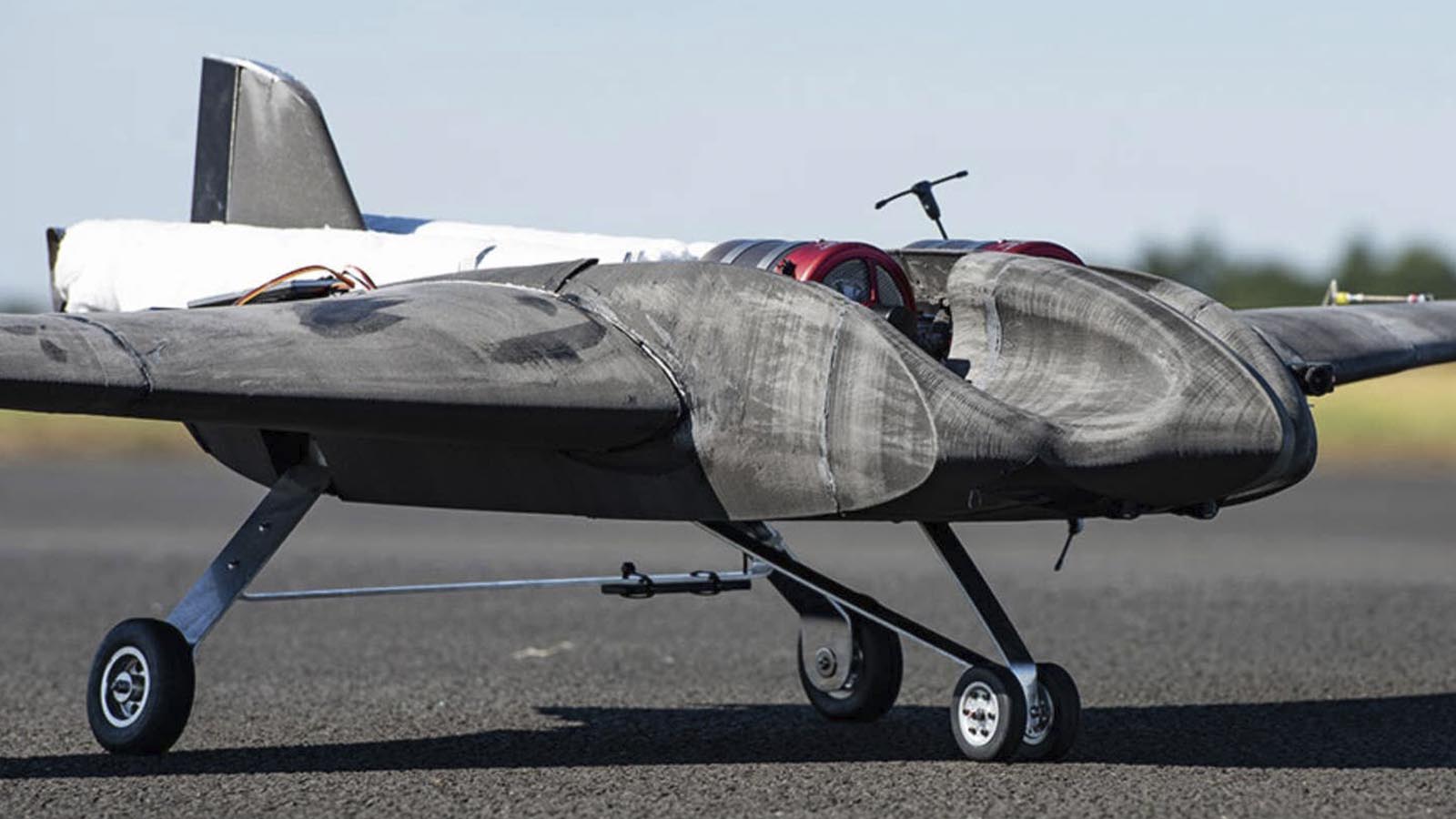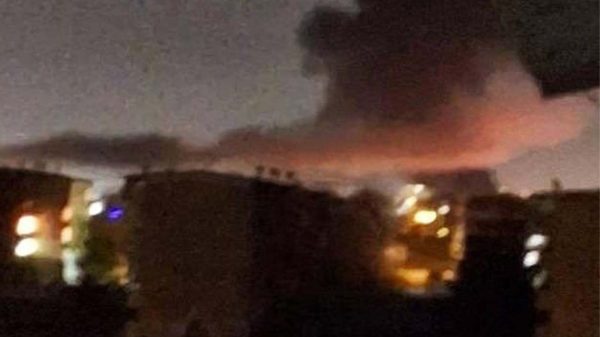In an until-now secretive program, the United Kingdom has rapidly developed and flight-tested a number of “complex” drones that would be suitable for use by Ukraine in its conflict with Russia. While it’s unclear which of any of the unmanned aircraft systems (UAS) in question were ultimately selected for supply to Ukraine, it’s obvious that a range of different capabilities was explored in the process, including surveillance drones and, most intriguingly, what is described as a “3D-printed delta-wing ‘suicide’ drone.”
Some details of the rapid development program were recently revealed by QinetiQ, the U.K.-based defense technology company that works closely with the U.K. Ministry of Defense, especially on experimental projects and novel technologies. The drone program originated in the Future Capability Group — part of the defense ministry’s Defense Equipment and Support (DE&S) branch — which, in turn, engaged QinetiQ.
A statement from QinetiQ doesn’t confirm when the program actually took place, while an uncaptioned accompanying photo (also seen at the top of this story) shows a small drone with swept wing and tail fin, apparently powered by a pair of micro-turbine engines, and possibly 3D-printed. The suggestion is that this is one of the prototypes from the program, but that also remains unconfirmed for now. On both counts, we have approached the company to find out more.
The aim of the program was to “provide recommendations for uncrewed aircraft systems that could be deployed readily by the Ukrainian military” and was part of a wider U.K. government effort, known as KINDRED, that’s assessing what kinds of weapons and equipment could potentially be introduced to service by Ukraine in the space of just four months.
Within “a few weeks,” according to QinetiQ, it was determined that the drone program would be run from the company’s sprawling MOD Boscombe Down test site, in southwest England. Here, efforts were made to set up a safe and effective “sandbox window” test environment on the airfield.
But while KINDRED explores potential new defense equipment for Ukraine that can be brought to the front line within four months, the drone program was run on a much more demanding timeline. Within just three weeks, the QinetiQ-led team was to demonstrate a series of new drones and related technology to senior U.K. Ministry of Defense officials, during a two-day event. This would include “flying experimental UAS and EW [electronic warfare] testing.”
The QinetiQ Obsidian radar, offered as a counter-drone solution:
Ultimately, the defense ministry officials observed equipment, systems, and technologies from five different companies that were demonstrated at Boscombe Down. According to QinetiQ, the test projects “included C2 [command and control] and sensor payload[s] as well as VTOL [vertical takeoff and landing] UAS and a unique 3D-printed delta-wing ‘suicide’ drone.” No details of other projects were disclosed and the companies involved have not been named.
We do know, however, that there was close involvement from a range of U.K. defense organizations and units, including the Royal Air Force (RAF) Rapid Capabilities Office (RCO), the Royal Navy, the RAF’s No. 56 Squadron, Royal Artillery, Defense Science and Technology Laboratories (DSTL), U.K. Strategic Command, and the British Army HQ, as well as the Future Capability Group and DE&S.
As well as flight tests of at least some of the rapidly developed drones, the trials also included experiments on the ground, and use was also made of Boscombe Down’s anechoic test facility, which can be used to assess how test specimens respond to radio-frequency energy, as well as providing a controlled environment to see how electronic systems and emissions interact with one another. The anechoic chamber was also used to expose the test specimens to command link jamming, an important consideration in Ukraine considering Russia’s widespread use of offensive electronic warfare.
It is worth noting that QinetiQ has also been playing a central role in developing new UAS technologies for the U.K. Royal Navy, including producing the jet-powered Banshee Jet 80+ that has been launched from the deck of the aircraft carrier HMS Prince of Wales. The adapted target drone has been used to demonstrate the broader potential for flying future adversary missions as well as more capable operational UAS that could be used aboard the two Queen Elizabeth class carriers. A Banshee development would also appear to be suitable for adaptation as a ‘suicide’ drone, should that be desired. At the very least, it would seem likely that work with the Banshee could have informed the designs developed for Ukraine.
The development program in the United Kingdom seems to have some parallels with the U.S. effort to develop the still-mysterious Phoenix Ghost loitering munition for Ukraine. This all-new weapon was quickly developed by the U.S. Air Force specifically for Ukraine and, although announced as part of a U.S. security assistance package in April last year, the weapon is not thought to have been identified in use so far.
The big question is to what degree the results of the U.K. drone experiment led to technologies that were selected for Ukraine and whether these might have even been used on the battlefield already. QinetiQ has only said that the event “delivered invaluable UAS insight and assurances to support the provision of effective equipment for the Ukrainian military.”
At the same time, while the United Kingdom is known to have transferred a considerable number of drones to Ukraine — at least 2,000, including loitering munitions — as part of its aid effort to that country, there have been few details as to the particular types supplied. It is possible that at least some of the drones supplied already are of types or configurations that were specifically designed for Ukraine.
Some of the drones provided to Kyiv by the United Kingdom so far include “unmanned surveillance systems” of unknown type, cargo-carrying logistics drones, autonomous mine-hunting vehicles, as well as 850 hand-launched Black Hornet micro-drones, the latter as part of a deal in collaboration with the Norwegian Ministry of Defense.
To date, the United Kingdom is not known to have delivered any armed drones, although the fact that a delta-wing ‘suicide’ drone has at least been tested, with a view to supplying it to Ukraine, is significant.
In fact, Ukrainian efforts to field a ‘suicide’ drone in broadly the same class as the Iranian-designed Shahed-136 used by Russia may well be gaining momentum.
A brief video that emerged on social media within the last week shows what’s apparently a modified version of the RZ60, which was originally developed in Ukraine as a target drone. The new version uses a trailer-mounted rocket-assisted launch system, instead of the previous pneumatic catapult. There is speculation that the drone is intended for one-way attack missions, although that cannot be said for certain, and details such as range and payload remain unclear.
What we do know is that Ukraine has adapted other kinds of drones for ‘suicide’ missions, including off-the-shelf hobby-style drones that have been used to target objectives in Crimea and across the border in Russia.














